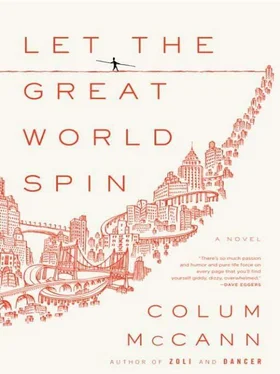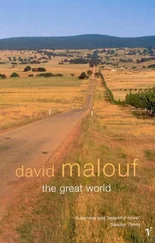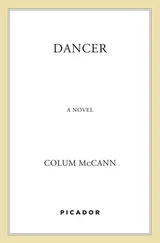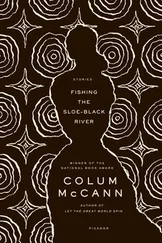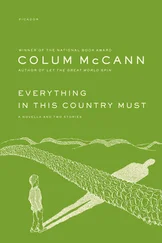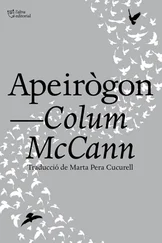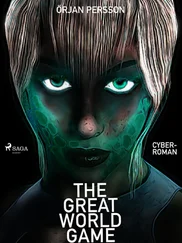Afterward, he was immediately thirsty. All he wanted was water and for them to unsnap the wire: it was dangerous to leave it there. He said: “You must take down the wire.” They thought he was joking. They had no clue. It could tighten in the wind, snap, take off a man’s head. They pushed him toward the center of the roof. “Please,” he begged. He saw a man step toward the winch to loosen it, to take off the tension. He felt an enormous relief and tiredness sweep over him, sliding into his life again.
When he emerged from the towers, handcuffed, the onlookers cheered. He was flanked by cops, reporters, cameras, men in serious suits. The flashbulbs went off.
He had picked up a paper clip in the World Trade Center’s station command and it was easy enough to open the cuffs: they clicked with a little lateral pressure. He shook out his hand as he walked, then raised it to a cheer. Before the cops even realized what he had done, he snapped the handcuffs shut again, behind his back.
“Smart-ass,” said the cop, a sergeant, pocketing the paper clip. But there was admiration in the sergeant’s voice: the paper clip would be a story forever.
The walker passed on through the gauntlet across the plaza. The squad car was waiting at the end of the steps. It was strange to revisit the world again: the slap of footsteps, the call of the hot-dog man, the sound of a pay phone ringing in the distance.
He stopped and turned to look at the towers. He could still make out the tightrope: it was being hauled in, slowly, carefully, attached to a chain, to a rope, to a fishing line. It was like watching a child’s Etch A Sketch as the sky shook itself out: the line kept disappearing pixel by pixel. Eventually there would be nothing left there at all, just the breeze.
They were crowding him, shouting for his name, for his reasons, for his autograph. He stayed still, looking upward, wondering how the onlookers had seen it: what line of sky had been interrupted for them. A journalist in a flat white hat shouted, “Why?” But the word didn’t come into it for him. He didn’t like the idea of why. The towers were there. That was enough. He wanted to ask the reporter why he was asking him why. A children’s rhyme slipped through his mind, a riffle of whys, good-bye, good-bye, good-bye.
He felt a gentle shove on his back and a pull on his arm. He looked away from the towers and was guided toward the car. The cop put his hand on the top of his head: “In you go, buddy.” He was guided down onto the hard leather seats, handcuffs on.
The photographers put their lenses against the car window. An eruption of light against the glass. It briefly blinded him. He turned to face the other side of the car. More cameras. He stared ahead.
The sirens were turned on.
All was red and blue and wail.
THE THEATER BEGAN SHORTLY AFTER LUNCH. His fellow judges and court officers and reporters and even the stenographers were already talking about it as if it were another of those things that just happened in the city. One of those out-of-the-ordinary days that made sense of the slew of ordinary days. New York had a way of doing that. Every now and then the city shook its soul out. It assailed you with an image, or a day, or a crime, or a terror, or a beauty so difficult to wrap your mind around that you had to shake your head in disbelief.
He had a theory about it. It happened, and re-happened, because it was a city uninterested in history. Strange things occurred precisely because there was no necessary regard for the past. The city lived in a sort of everyday present. It had no need to believe in itself as a London, or an Athens, or even a signifier of the New World, like a Sydney, or a Los Angeles. No, the city couldn’t care less about where it stood. He had seen a T-shirt once that said: NEW YORK FUCKIN’ CITY. As if it were the only place that ever existed and the only one that ever would.
New York kept going forward precisely because it didn’t give a good goddamn about what it had left behind. It was like the city that Lot left, and it would dissolve if it ever began looking backward over its own shoulder. Two pillars of salt. Long Island and New Jersey.
He had said to his wife many times that the past disappeared in the city. It was why there weren’t many monuments around. It wasn’t like London, where every corner had a historical figure carved out of stone, a war memorial here, a leader’s bust there. He could only really pinpoint a dozen true statues around New York City — most of them in Central Park, along the Literary Walk, and who in the world went to Central Park these days anyway? A man would need a phalanx of tanks just to pass Sir Walter Scott. On other famous street corners, Broadway or Wall Street or around Gracie Square, nobody felt a need to lay claim to history. Why bother? You couldn’t eat a statue. You couldn’t screw a monument. You couldn’t wring a million dollars out of a piece of brass.
Even down here, on Centre Street, they didn’t have many public back-slaps to themselves. No Lady Justice in a blindfold. No Supreme Thinkers with their robes wrapped around themselves. No Hear No Evil, See No Evil, Speak No Evil carved into the upper granite columns of the criminal courts.
Which was one of the things that made Judge Soderberg think that the tightrope walker was such a stroke of genius. A monument in himself. He had made himself into a statue, but a perfect New York one, a temporary one, up in the air, high above the city. A statue that had no regard for the past. He had gone to the World Trade Center and had strung his rope across the biggest towers in the world. The Twin Towers. Of all places. So brash. So glassy. So forward-looking. Sure, the Rockefellers had knocked down a few Greek revival homes and a few classic brown-stones to make way for the towers — which had annoyed Claire when she read about it — but mostly it had been electronics stores and cheap auction houses where men with quick tongues had sold everything useless under the sun, carrot peelers and radio flashlights and musical snow globes. In place of the shysters, the Port Authority had built two towering beacons high in the clouds. The glass reflected the sky, the night, the colors: progress, beauty, capitalism.
Soderberg wasn’t one to sit around and decry what used to be. The city was bigger than its buildings, bigger than its inhabitants too. It had its own nuances. It accepted whatever came its way, the crime and the violence and the little shocks of good that crawled out from underneath the everyday.
He figured that the tightrope walker must have thought it over quite a bit beforehand. It wasn’t just an offhand walk. He was making a statement with his body, and if he fell, well, he fell — but if he survived he would become a monument, not carved in stone or encased in brass, but one of those New York monuments that made you say: Can you believe it? With an expletive. There would always be an expletive in a New York sentence. Even from a judge. Soderberg was not fond of bad language, but he knew its value at the right time. A man on a tightrope, a hundred and ten stories in the air, can you possibly fucking believe it?
SODERBERG HIMSELF HAD just missed the walk. It upset him to think so, but he had, just by minutes, seconds, even. He had taken a cab all the way downtown. The driver was a sullen black man blaring music through the speakers. A smell of marijuana in the cab. Sickening, really, the way you couldn’t get a clean, decent ride anymore. Rastafarian music from the eight-track. The driver dropped him off at the rear of 100 Centre Street. He walked past the D.A.’s office, stopped at the locked metal-framed door on the side, an entrance only the judges used, their one concession, designed so they wouldn’t have to mix with the visitors at the front. It wasn’t so much a furtive doorway, or even a privileged thing. They needed their own entrance, just in case some idiot decided to take matters into his own hands. Still, it brightened him: a secret passage into the house of justice.
Читать дальше
